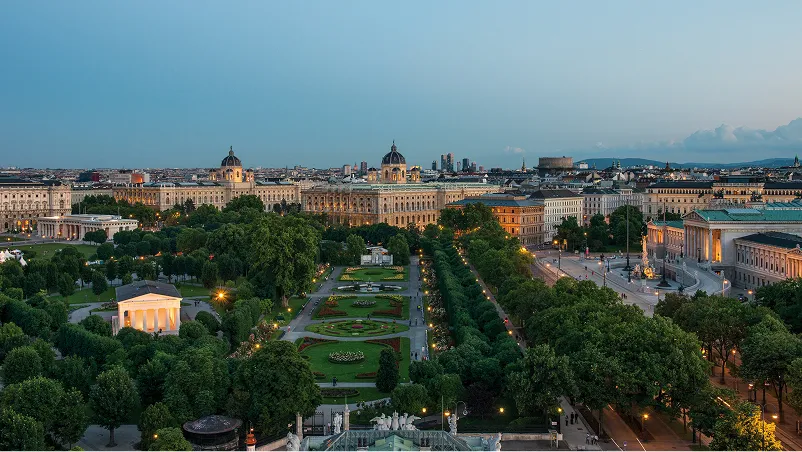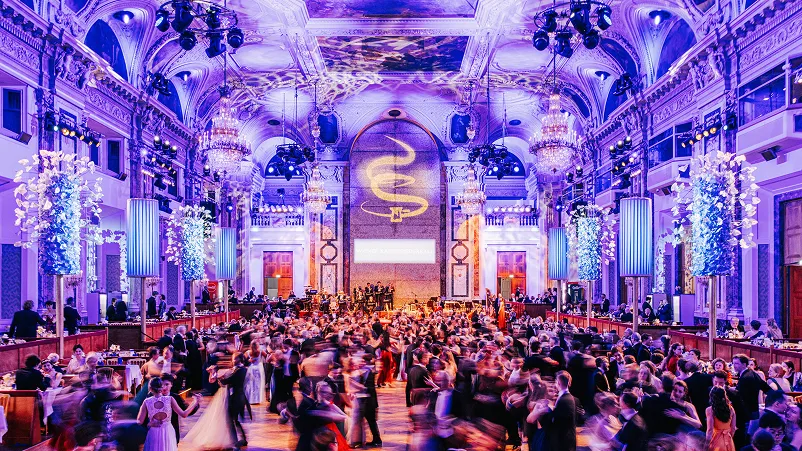
Beyond the postcard centre, where the Ring Road circles palaces and opera houses, most Viennese live in districts strung with tree-lined streets and courtyards. Migration has been part of the backdrop for decades, folding in students who came for a semester and never left, Germans who found the rhythm here slower, and neighbours whose much-quoted ‘unfriendliness’ is really a dry sort of stagecraft you’ll eventually perform yourself.
On hot days, you might refill your bottle from a fountain fed by century-old pipelines, then follow the pull of the Danube Island – twenty-one kilometers of swimming coves, bike paths, and, once a year, a music festival that feels like its own republic. As the heat fades, evenings settle into bars under railway arches, the last drink timed to the first tram. Between these hours, the city layers in its culture: plates of schnitzel or Tafelspitz, museums you can cross on foot, a standing ticket at the opera, and a pause beneath the golden dome of the Secession that still looks like it belongs to tomorrow.

Local temperament keeps it all grounded. Inequality is low, which is why the city feels safe in a way that’s almost disarming. People will complain – about the weather, politics, the price of cake – but it’s a ritual. Strict rules on short-lets mean stairwells stay neighbourly and housing remains for residents. Tourists cluster in the centre while the real Vienna hums elsewhere: children wobbling through courtyards on tiny bikes, neighbours swapping news across balconies, a slow rhythm that resists hurry.
Wherever you live, you owe yourself at least one visit here. Vienna isn’t a city that overwhelms on arrival – it sidles up instead. Within a few days you realise the trams are as punctual as the stereotypes, the coffeehouses are better than the myths, and the museum pass you bought in a hurry is still carrying you through masterpieces weeks later. You don’t tick Vienna off a list, you drift into it – and by the time you leave, you’re already planning to return.

For anyone tempted to stay longer, the property market rewards patience. Apartments generally range from the mid-€5,000s to €7,000 per square meter depending on the district, with the historic core and leafy west commanding more. Yields hover around 3–4% – a predictable return in a tightly regulated environment. With short-lets capped, the smart choice is a well-kept flat near a U-Bahn stop, a lively square, and a building where the owners care about the details.
The pleasure of the place is how quickly it becomes yours. Soon you find a heuriger where the staff greet you by sight, a coffeehouse that lets you linger with a book, and a bakery that saves you the last jam doughnut. Vienna’s trick is competence with character – a morbid, funny, grumpy charm you grasp in a week and never tire of. Once you get the joke, you realise grumbling is a love language here. The rest, as the city would shrug, is fine as it is.


.png)
.png)
.png)
.png)
